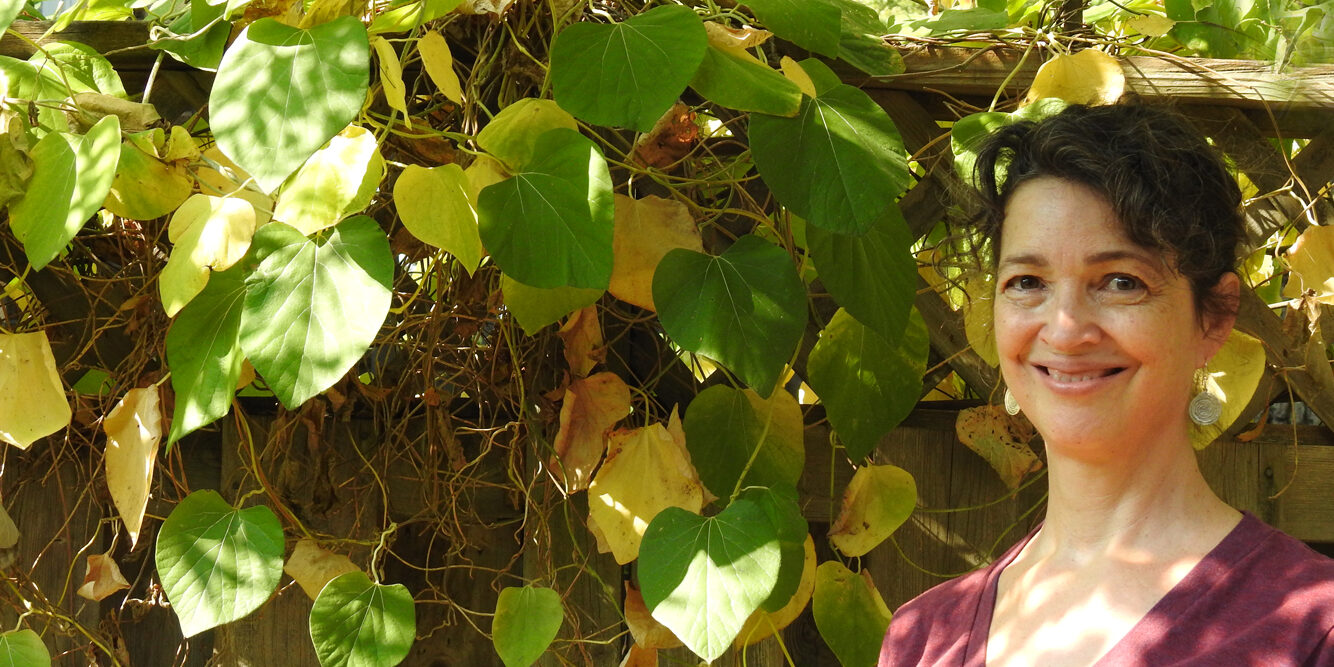By Thelma Baubien
–
When Kelly Main moved to a downtown Guelph property in 2007, little did she know the rare butterfly experience in store for her. Kelly is a lover of birds and all flora and fauna. She wanted her gardens to reflect her desire to decolonize the 40 square metres under her control and, more importantly, she was hoping to support local species. The property housed two old walnut trees, so she immediately began to research native plants that would tolerate the juglone produced by the walnut trees. She discovered Dutchman’s Pipe, a vigorous growing, woody, deciduous vine native to eastern North America, and considered a near native for southern Ontario. Her wood fence was the perfect place for growing the vine.
Then forward seventeen years to June 2024 when Kelly had the rare opportunity to witness a Pipevine Swallowtail butterfly, Battus philenor, nectaring on her hanging basket of flowers and laying eggs on her Dutchman’s Pipe. What makes this so exciting is that there is no previous record of a Pipevine Swallowtail laying eggs and reproducing in Guelph.



Looking back on the records in Southern Ontario from previous years, about four Pipevine Swallowtails would be recorded of this rare migrant. Then surprisingly in 2012, it turned out to be “a banner year for B. philenor, with the most massive migration on record in recent history which was perhaps due to the extremely mild winter and unseasonably warm spring” (from The Pipevine Swallowtail: Life Cycle and Ecology, Xi Wang, 2012). As it turned out, hundreds of the species entered the province from the southwest.
What was learned about this rare species is that the Pipevine Swallowtail feeds on plants in the genus Aristolochlia. There are two species in the genus that are grown in Ontario – A. macrophylla (Dutchman’s Pipe or pipevine, a perennial vine native to the eastern United States) and the slightly more common A. tomentosa (Wooly Dutchman’s Pipevine). These both contain aristolochic acid that makes the species unpalatable to would-be predators.
Since then, from 2013 to 2023, on average, 11 Pipevine Swallowtails have been reported throughout Ontario. In early 2025, the Ontario Butterfly Atlas will be updated with the 2024 sightings from iNaturalist and e-butterfly. The results are looking to be very positive.
My sincerest thanks to Kelly Main, a fellow member of the Facebook Group, Grand Gardeners, who invited me to be a part of her Pipevine Swallowtail experience.
Thelma Beaubien is an avid butterfly lover having photographed and recorded 72 species across Ontario including 31 species in her own butterfly garden. She provides butterfly information to members of Grand Gardeners on Facebook.
To become more aware of pollinators and to create pollinator habitat, please visit https://www.pollinationguelph.ca/resources.


